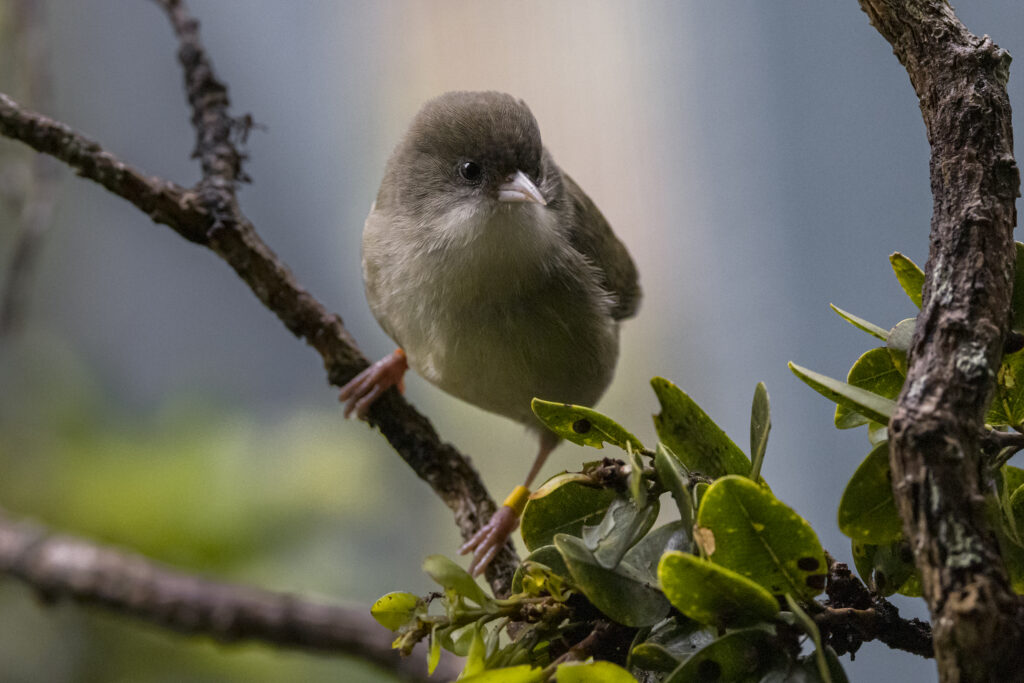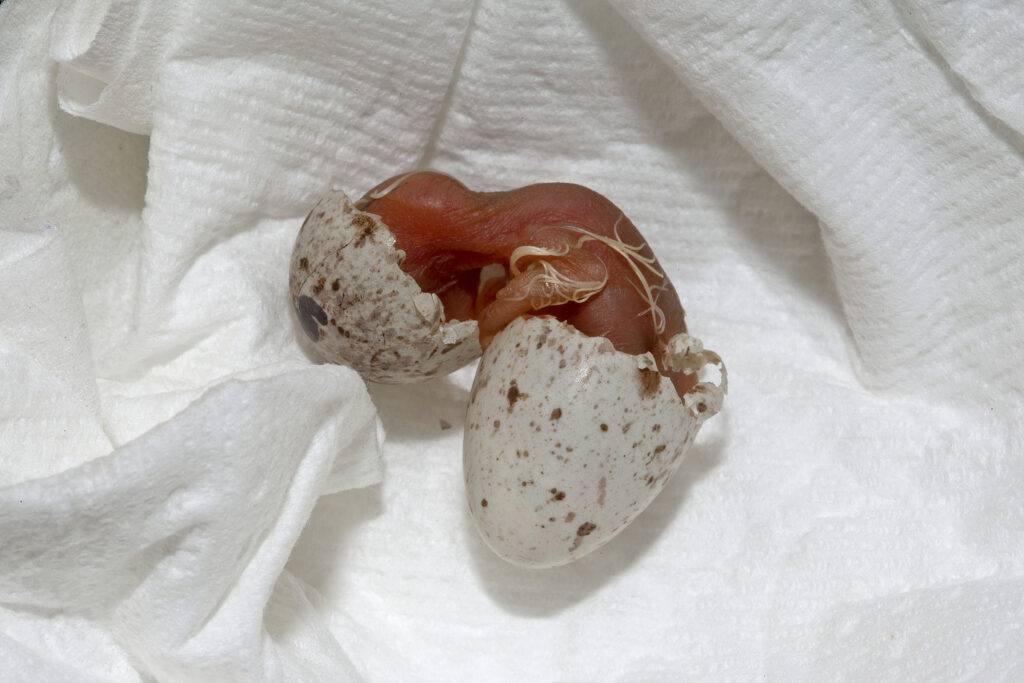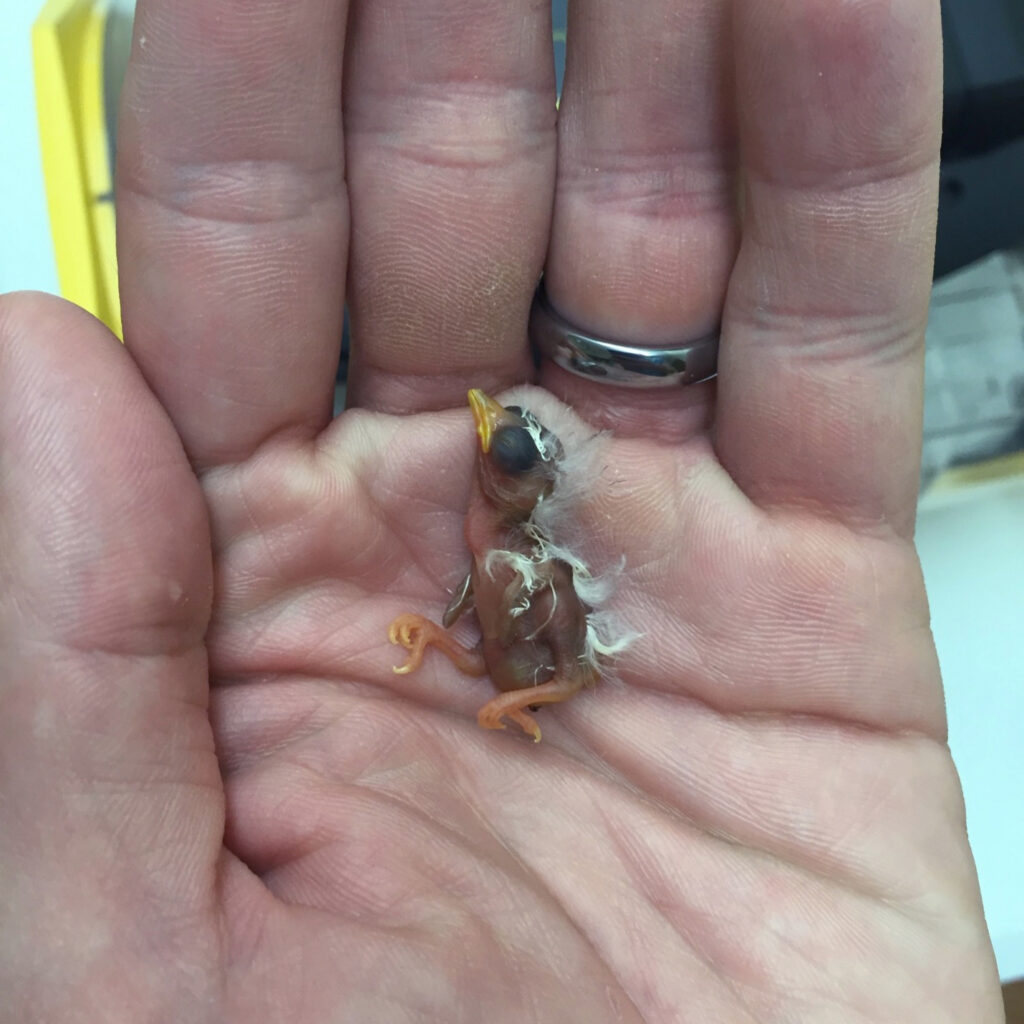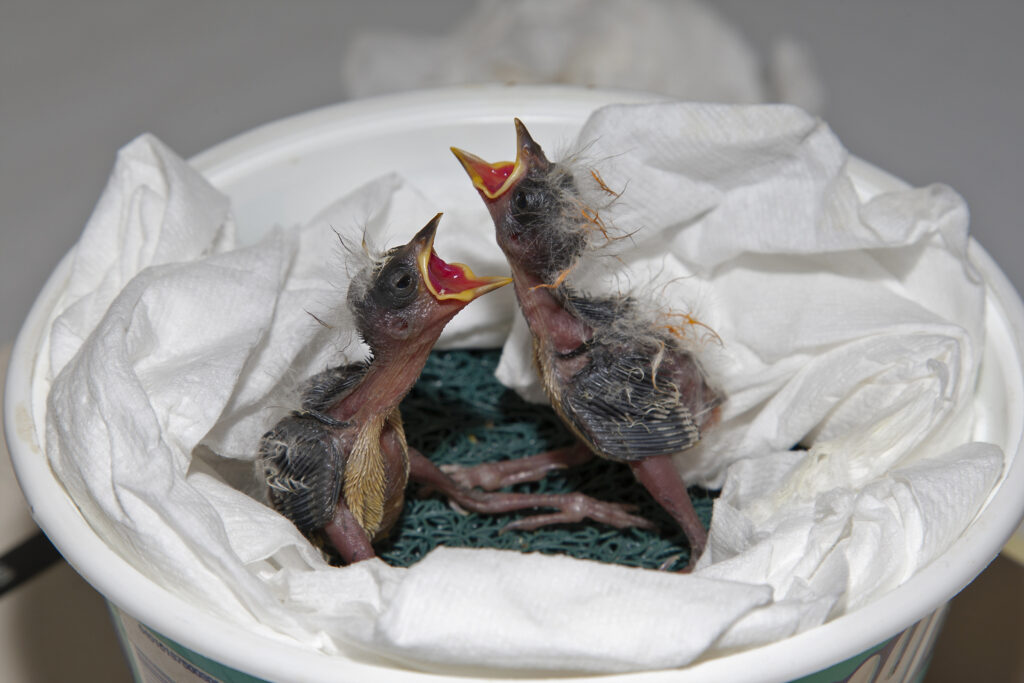
Since 1993, the San Diego Zoo Wildlife Alliance (SDZWA) Hawai`i Endangered Bird Conservation Program (HEBCP) has provided protective care for several species of Hawaiian birds, which are some of the most critically endangered wildlife on the planet. I have been fortunate to be involved with the program since 2004, and while I now work at the San Diego Zoo’s Jennings Veterinary Hospital, I continue to return to Hawai`i and share my aviculture skills when the team there needs extra help.

In 2015, I was asked to visit Kaua`i to help bring in eggs from two critically endangered honeycreepers, the `akikiki Oreomystis bairdi and the `akeke`e Loxops caeruleirostris. Our goal in bringing in wild eggs was to create an emergency flock of these species at the HEBCP’s Keauhou and Maui Bird Conservation Centers.
Neither species had ever been cared for in a managed-care setting, so I helped develop protocols to care for the eggs and chicks. The egg collections were successful—and so was the hand-rearing. The birds adapted to life in our centers and, in a major accomplishment of aviculture, they are now breeding there. With fewer than a hundred individuals remaining in their native habitat, this is a major achievement in saving these birds.

This year, I’ve returned to the Big Island twice to help hatch out and hand-rear`akikiki chicks. It was a thrill to come full circle and assist in hatching out chicks from eggs laid by the now-adult `akikiki that I helped raise seven years ago.
`Akikiki chicks are incredibly small, weighing between .04 and .07 ounces (1 to 2 grams) when they hatch out. This means that a chick weighs about the same as one or two regular M&M candies!

We hand feed the chicks 15 times per day, every hour from 6 a.m. to 8 p.m. When they first hatch, we feed them a rotation of cricket guts, bee larvae, and scrambled egg. We add more items as they grow and their digestive systems develop. In less than three weeks, the chicks fledge; and at about two months of age, they are completely self-feeding.

With climate change raising the temperatures of Hawai`i, non-native mosquitos are bringing avian pox and avian malaria to the highest elevations of Kaua`i, where the native birds have no immunity to these lethal diseases. Unfortunately, the diseases have devastated bird populations. That makes the birds under our care vitally important in supporting these species, while active efforts to control or eradicate mosquitos are underway. Once the mosquitos are gone, these amazing and astonishing species can be returned to their native forests on Kaua`i.
Special thanks to Dr. and Mrs. Richard Robbins
representing the Max and Yetta Karasik Family Foundation
for their generous support for the Hawai`i Endangered Bird Conservation Program.
Watch a hyperspeed video of an `akikiki hatching (below).




